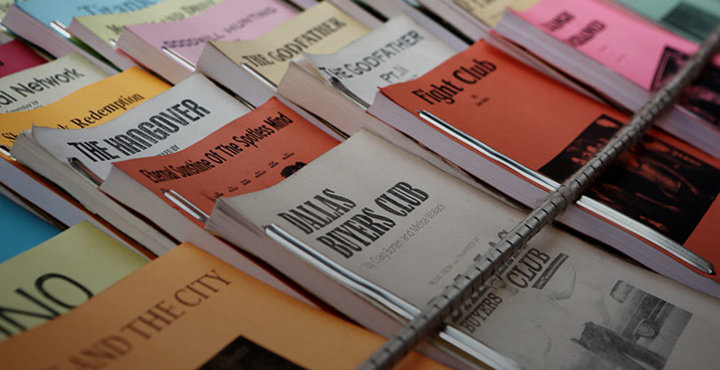The essentials of formatting your script for the theater
1. Style guide specifics
Like any other kind of formatting, the rules for script writing format vary depending on the style guide you're following. Different theatre companies, schools, and contests have different requirements for how to format script submissions. Check the website of the company you're sending your script to for submission and formatting requirements.
2. Title page
Just as Glinda the Good Witch tells Dorothy in The Wizard of Oz, "It's always best to start at the beginning." This is one rule that applies to both traveling down the Yellow Brick Road and script writing format. Your title page should be the first page of your book. It should not have a page number on it. The placement of the title on the page depends on the style guide you're following; however, most title pages have the title located about one-third of the way down the page, with the author or authors' name(s) located below it. The title is always written in all capital letters. The name(s) and contact information of the author(s) should be written on the bottom of the page in either the left or right corner, depending on the style guide being followed.
3. Character list, or dramatis personae
The next page of your script should be the list of characters. This may be titled Character List or Dramatis Personae. The characters should be listed in order of importance. Their names should be written in all capital letters and located on the left side of the page, with their corresponding descriptions located on the right side of the page. It should look something like this:
ROMEO MONTAGUE Son of MONTAGUE and LADY MONTAGUE. In love with JULIET. Very impulsive and slightly mentally unstable.
JULIET CAPULET Daughter of CAPULET and LADY CAPULET. Thinks she is in love with ROMEO, but is betrothed to PARIS. Far too young to be getting married either way.
Please note that, once you begin using the names of the characters in your actual script, you will only refer to them by their first name (given name) or last name (family name or surname).
4. Setting and time
Standard script writing format also calls for a setting and time page. This should occur after the character list. This page will not have a title. The word setting should be written in capital letters and centered at the top of the page. Beneath this should be a description of the setting. Next, the word time should be capitalized and centered on the page. Beneath this should be a description of the time during which the action is taking place. If your play has several different settings, some script writing formats require a scene-by-scene breakdown of each setting and time. Check your style guide. A basic setting and time page should look something like this:
SETTING
The Capulet and Montague homes, Verona, Italy.
TIME
Three days of the year in the year 1600.
5. Act and scene labeling
Each act and scene should be labeled to achieve proper script writing format. Acts should be designated using roman numerals, while scenes should be labeled with Arabic numbering. For example, the first scene in your play should be Act I, Scene 1. All pages from the first scene onward should be numbered, and the page numbers should be placed in the upper right-hand corner of the page. Courier or Courier New are the fonts used in most script writing formats.
6. Scenes and dialogue
All stage directions, including introductory scene information, should be in parentheses. The first letter of the name of the character who is speaking should be centered, with the rest of the name continuing to the right margin. Use the Tab key rather than the centering function of your word processer. Script writing format requires that characters' names always be in all caps unless they are being used within the dialogue of other characters. The dialogue should appear directly beneath the character's name. It should look something like this:
JULIET
Romeo, Romeo! Why must you be Romeo? Forget about your father and change your name. Or, if you won't do that, just swear to love me. If you do that, I'll stop being a Capulet.
ROMEO
(to himself)
Should I keep eavesdropping, or should I let her know I'm here?
Please note that, depending on which style guide you're following, the first paragraph of a new scene may need to be indented further to the right than subsequent paragraphs.
Still need some help?
If, after reading this guide, you still find the art of script writing format to be overwhelming, don't worry. Do your best to format your script properly, and when you're finished, send it to the script editors at Scribendi.com. We'll make sure that your finished product looks polished and professional.











